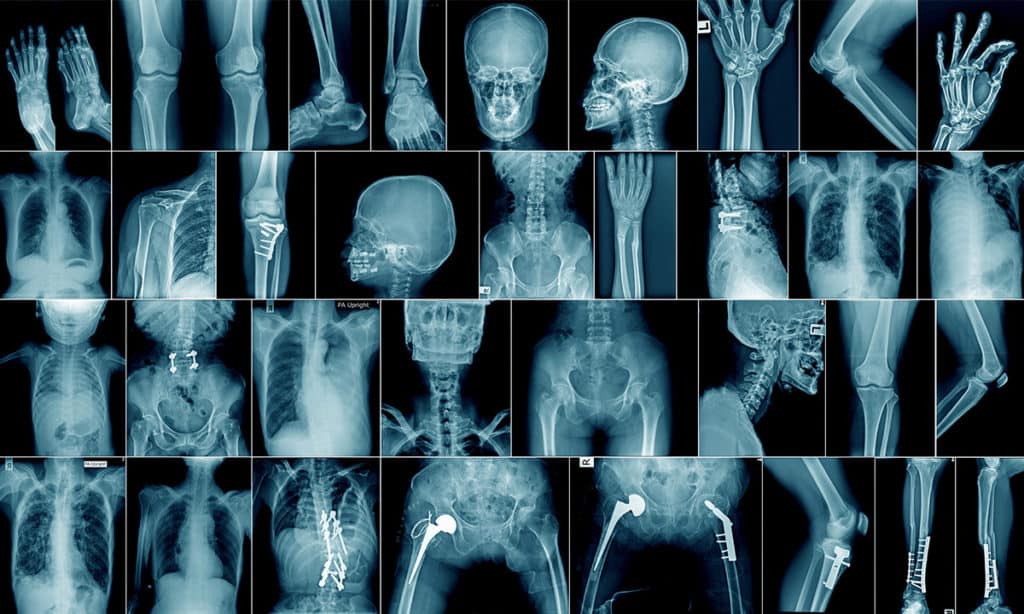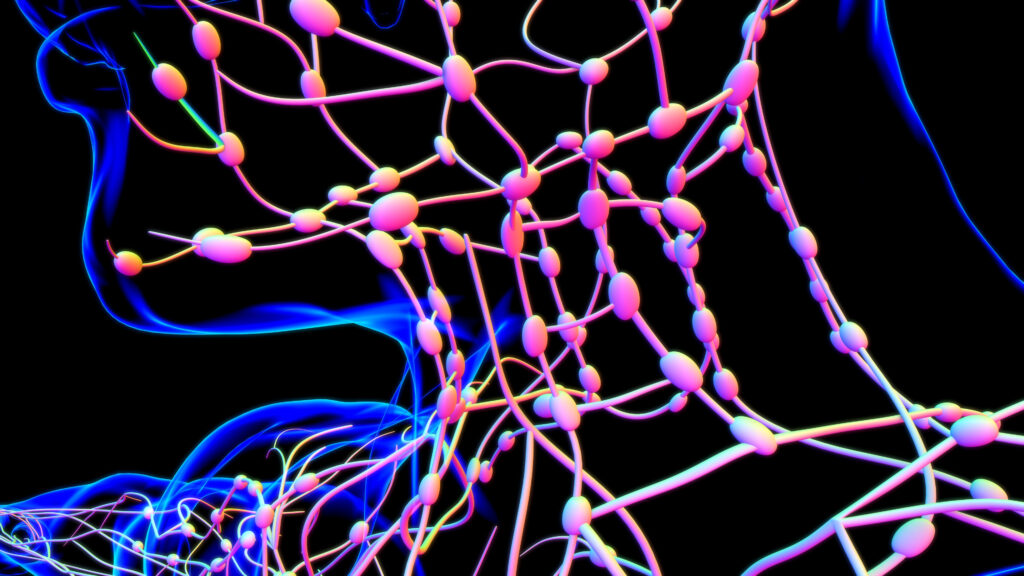Radiology and radiography are the branches of medicine that focus on imaging technology to detect, diagnose, and treat disease. At Echelon Health, we recognise that there is not one scan that can be utilised to detect all diseases, and as such we employ several imaging technologies to help us.
In turn, our team of radiographers and radiologists help us analyse and advise our clients on the results and treatment that may be needed. These specialists are key in understanding imaging technology. In recognition of World Radiology/Radiography Day, we want to count down some of the reasons why this branch of science is important in healthcare.
But first, what is the difference between a Radiographer and a Radiologist.
What does a Radiographer do?
Radiographers are the specialists who perform most of the diagnostic tests. They have professional training that allows them to operate the specialised imaging technology which includes CT and MRI scanners, X-Ray, and ultrasound machines.
Their responsibility for the equipment extends to ensuring that the images obtained during scans are high quality and fit for the purpose.
Finally, they are also accountable for guiding and making sure the client is comfortable and safe as they go through the scans as it can sometimes be an intimidating experience (Padley, 2021).
What does a Radiologist do?
A radiologist is a specialist who has been through advanced training in medical imaging and diagnostics. Their main responsibilities in this field are to accurately analyse the resulting images that are created by the radiographers. The resulting images should be looked at closely and discussed in detail so that accurate diagnoses are provided.
Additionally, radiologists must speak to the clients and advise them of a further course of action regarding any abnormalities that may be present. They should consult on future surveillance if required or give advising notes of treatment if appropriate (Padley, 2021).
Three Types of radiology
-
Diagnostic Radiology
This is the most basic type of radiology – it is used to see details inside your body. The images gained from diagnostic radiology help doctors gain perspective on the causes of symptoms clients may be experiencing, check how well your body is adjusting to treatment and screen for various diseases and illnesses like heart disease or cancer.
Some of the technology involved in diagnostic radiology includes:
- CT scan
- MRI
- Mammography
- X-Rays
- Ultrasound
-
Interventional Radiology
Interventional radiology is more complicated as it is image-guided surgery. They use the imaging tools mentioned above as a guide for their procedures. Most interventional procedures favour minimally invasive options (Zieve et al., 2019).
Advantages of this type of radiology include:
- Lower costs
- More comfort for the client
- Faster recovery time
-
Therapeutic Radiology
This type of radiology is sometimes referred to as radiation therapy. It focuses on treating cancer and other diseases using radiation. Using various tools, radiation therapy specialists locate the area in need of treatment and using specialised shields will make sure that the radiation procedure interacts with the correct area (RevereHealth, 2019).
Five reasons radiology is important in health care
Now that we know what it means to be a radiographer and a radiologist it is clear that both groups of professionals should work together to offer the most effective help to clients no matter their condition.
Of course, beyond teamwork there are five top reasons why radiology is crucial for healthcare:
-
Prevention and screening
Preventive screening focuses on testing for diseases to catch them early enough for the most effective treatment. If you can detect the disease while it is still in the early stages it is much easier to treat and prevents it from ever developing into a serious, even fatal, condition.
Preventive screening allows patients to get the correct treatment as early as possible. Additionally, being able to catch diseases at early stages can provide valuable insight to doctors and researchers about things that may have been unknown previously. Data gathered from preventive screening may aid in the development of better technology and improved treatment (Health Images, 2021).
-
Treatment and therapy
Depending on the type of radiography a client is coming for, this branch of medicine can help provide guidance, and in some cases even treatment. Therapeutic radiographers operate highly complicated equipment and help plan and deliver treatment. There are two stages to the planning (Birmingham City University, 2021):
- A scan is done to determine the specific location of the affected area and the precise position that should be treated
- After consultation with doctors, a treatment schedule is then prepared with the correct radiation dose and enter/exit locations
-
Informing the public
It is up to scientists and medical practitioners alike to do their best to improve the general knowledge of the public. There can be many misconceptions about medicinal practices spread on the internet or publications. The ability to reach people is key to spreading best practices in treatment technology. Especially if someone’s life depends on a scan.
This is one of the reasons why Echelon Health believe that using CT scans in situations where it is appropriate is best. Some would argue that the radiation levels are too high, however, with the advanced technology of the CT scan at our disposal, we are able to ensure that clients are not subjected to high doses of radiation.
-
Staying ahead in technology and medicine
Imaging technology is used during a huge variety of procedures, surgical and diagnostic. This is because doctors and surgeons always need detailed and up-to-date information on a client’s condition before taking any steps towards treatment.
As a result of that, radiology is often involved in various research studies that are looking at new surgical procedures, devices, or treatment methods (RLBUHT, 2021).
-
Tracking and evaluating
The most common use of imaging technology is for tracking and evaluating a client’s condition. This is because a scan will show consistent, unbiased, and reproducible results every time. Results from imaging technology will be able to clearly show not only changes in the condition over time but also measure a specific response to treatment; this would help determine if the treatment is working or if something else should be done instead (RLBUHT, 2021).
Radiological studies become extremely important in cases where the disease is not immediately seen or can last a long time such as cancer.
Preventive Screening at Echelon Health
One of the main reasons Echelon Health can provide its unique services is because we believe that only by using the right scan for the right modality you can achieve the most accurate results.
Consequently, we use some of the most advanced scanners currently available.
- Aquilion ONE Prism 640 slice CT scanner: Specialist software unique to the PRISM provides the best image quality performed at low dose radiation. This allows it to scan a 16cm volume with each rotation, covering entire organs such as the heart, brain or whole joints.
- MrOpen upright and open MRI scanner: This unique MRI scanner features Nobel Prize-winning technology. Due to their expense and technological differences, there are currently just a handful of these scanners installed worldwide.
- Siemens 3T MRI (Magnetom Skyra): The 3T Siemens powerful 3T magnet delivers high-quality, clear images making it one of the highest quality MRI exams available today.
- EOS dual-source upright CT scanner: Images from this scanner allow accurate visualisation of the entire spine and major joints (hips, knees, ankles) which enables precise measurement and assessment.
Click here to find out more about these scanners and the multiple advantages they provide for screening practices.
With these scanners, we can detect tumours as small as 2mm and detect up to 92% and 94% of diseases that cause premature death among males and females respectively. If you want peace of mind about your health from head to toe, we offer the Platinum Assessment.
The Platinum Assessment is one of the most comprehensive health assessments currently available. It is a head-to-toe look at your body that scans for these diseases and illnesses:
|
Blood Tests
|
Diseases of the Digestive System
|
Diseases of the Respiratory System
|
Diseases of the Circulatory System
|
Cancers
|
| · [Women] CA 19.9 (Tumour marker for breast cancer)
· [Women] CA 125 (Tumour marker for ovarian cancer) · CEA (a more general tumour marker) · Fasting glucose and Glycosylated Haemoglobin tests (to determine diabetes risk) · Full blood count (anaemia) · Iron Levels, potentially an indicator for bowel cancer · Kidney, liver and bone function · Leukaemia · Lymphoma · [Men] PSA to help detect prostate cancer · Renal function and balance of salts including sodium and potassium levels · Thyroid gland function · Total, LDL and HDL Cholesterol · Vitamin D (beneficial impacts on muscle strength, cognitive function and combating bone disease and heart disease)
|
· Liver Disease
· Gallbladder, Biliary Tract and Pancreatic disease · Diverticular disease
|
· Chronic respiratory diseases
· Lung diseases · Diseases of pleura
|
· Coronary Heart Disease
· Cerebrovascular Disease (Stroke Risk) · Cerebral Haemorrhage · Aortic aneurysm and dissection
|
· Adrenal Glands · Bladder · Brain · Breast (Women) · Colon and Rectum · Kidney · Liver and bile ducts · Lung · Melanoma · Mesothelioma · Nasal Cavity and Middle Ear · Ovaries · Pancreas · Prostate (Men) · Renal · Sinuses · Testes · Thyroid · Uterus (Women)
|
To find out more information click here to download our brochure or contact our team who is always happy to help!
Sources:
Padley, S. (2021). Radiography vs. radiology – what is the difference? Available at: https://onewelbeck.com/imaging/news/radiography-radiology-differences/ (Accessed 20/10/2021).
Health Images (2021). Types of Preventative Imaging. Available at: https://www.healthimages.com/types-preventative-imaging/ (Accessed 20/10/2021).
Birmingham City University (2021). Diagnostic and Therapeutic Radiography: What’s the difference?. Available at: https://www.bcu.ac.uk/health-sciences/about-us/school-blog/diagnostic-and-therapeutic-radiography-whats-the-difference (Accessed 20/10/2021).
RLBUHT (2021). The Royal Liverpool and Broadgreen University Hospitals Trust. The Role of Radiology in Research. Available at: https://www.rlbuht.nhs.uk/staff-blogs/research-development-blog/the-role-of-radiology-in-research/ (Accessed 20/10/2021).
RevereHealth (2019). What is the Difference Between Diagnostic, Therapeutic and Interventional Radiology? Available at: https://reverehealth.com/live-better/what-is-the-difference-between-diagnostic-therapeutic-and-interventional-radiology/ (Accessed 20/10/2021).
Zieve, D., MD, MHA, Conaway, B. and the A.D.A.M. Editorial team (2019). Imaging and radiology. Available at: https://medlineplus.gov/ency/article/007451.htm (Accessed 21/10/2021).



